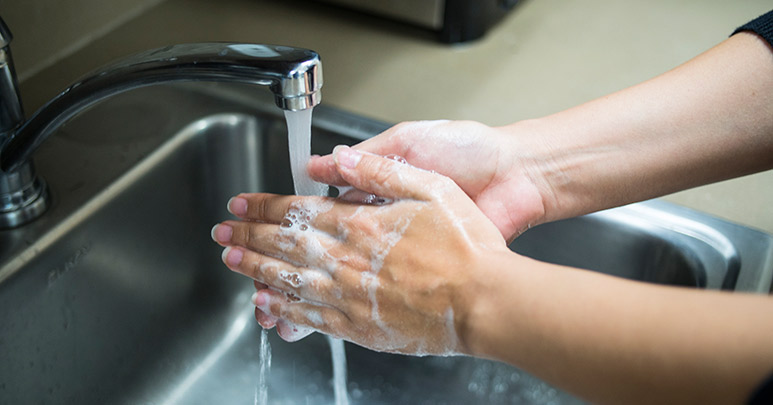
On September 2, the U.S. Food and Drug Administration (FDA) issued its final ruling on the safety and effectiveness of antibacterial soaps, which turns out isn’t so good. According to the agency:
“There isn’t enough science to show that over-the-counter (OTC) antibacterial soaps are better at preventing illness than washing with plain soap and water. To date, the benefits of using antibacterial hand soap haven’t been proven. In addition, the wide use of these products over a long time has raised the question of potential negative effects on your health.”
The FDA will no longer allow manufacturers to market antibacterial soaps with any of the 19 ingredients that were in question, including the most commonly used ingredients – triclosan and triclocarban. Manufacturers will have one year to comply with the new rule by either removing products from the market or reformulating products to remove prohibited ingredients. Learn more about the final ruling and how soap manufacturers can use this opportunity to improve their label look below.
Background on the Final Ruling
In 2013, the FDA issued a proposed rule after some data suggested that long-term exposure to certain active ingredients used in antibacterial products could pose health risks, such as bacterial resistance or hormonal effects. The proposed rule required antibacterial hand and body wash manufacturers to provide additional data on the safety and effectiveness of certain active ingredients. Manufacturers didn’t provide the necessary data to show that the ingredients are any more effective than plain soap and water in preventing illnesses and the spread of certain infections.
Due to the lack of evidence, the FDA decided that soap products can’t be marketed with any of the ingredients in question. The FDA advises consumers to wash their hands with plain soap and water to help avoid getting sick and prevent the spread of germs. Also, reading the Drug Facts label (which will have the same format) is recommended to ensure that product doesn’t contain triclosan, triclocarban, or other antibacterials ingredients. The final rule, however, only applies to antibacterial soaps and body washes – hand sanitizers, hand wipes, and antibacterial soaps that are used in healthcare settings (such as hospitals and nursing homes) are excluded.
If you’re a soap manufacturer, we have some label tips that can help make the transition to new labels a smoother process.

Label Tips for Soap Manufacturers
We understand that getting new labels due to regulatory changes isn’t an ideal situation, but that doesn’t mean you can’t use this to your advantage. For one thing, it’s the perfect opportunity to re-evaluate your label artwork and material choices to improve your soap’s packaging appeal. Check out these label tips to see how you can improve your soap labels while complying with new regulations.
- Give your label artwork a facelift: How long have you had the same artwork? If it’s been a while, then you’re probably do for an update. Consumer preferences are forever changing and what worked years ago may not work today. There are a variety of ways you can update your label artwork like streamlining it for a more minimal, timeless look or changing the graphics and typeface to better match your brand’s style.
- Upgrade your label materials: White and clear films are popular choices for soap labels but they’re not your only options. Foil film is a beautiful material that communicates a premium quality and catches consumers’ attention with its shine. Or, if you’re business is moving towards more eco-friendly practices, we offer biodegradable PLA (polyactic acid) film. It exhibits many of the same benefits as petroleum-based plastics, but is better for the environment.
- Don’t stock up on too much inventory: This one can seem counter intuitive because buying in large volumes decreases your cost per label, but it can end up costing you more in the long run. Buying year’s worth of labels is good if you won’t be changing your labels anytime soon, but when regulatory changes happen, those labels become obsolete. Instead, buy smaller batches so you can deftly adapt to any changes that come your way.
Whether you’re looking for a small or big update to your soap labels, we can help. Our online quote tool is an easy, fast way to get started on your custom labels, but if you need extra guidance, our customer service team would be happy to discuss your label needs.


